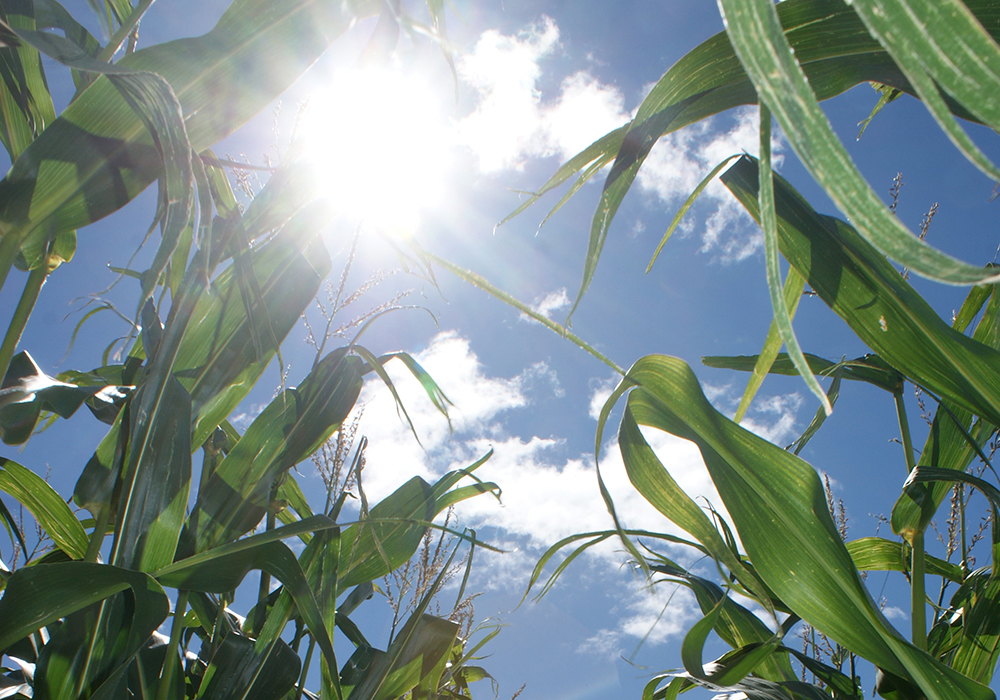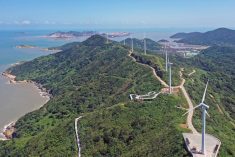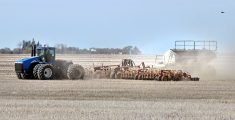U.S. researcher says big shifts are needed in what and how food is grown to keep agriculture sustainable and resilient
Farmers continue to consider ways to adapt agricultural practices to mitigate the consequences of climate change on their operations.
According to Agriculture Canada, global climate models confirm the future will be warmer with more extreme weather events. Climate records show that the Earth has been heating for the past century and 17 of the 18 warmest years have occurred since 2001.
A recent study at Emory University showed that, as climate change advances, the U.S. corn belt will become unsuitable for growing corn by 2100 unless there are major technological changes to crop production practices. Climate unpredictability will put crops and food security at risk.
Read Also

Agritechnica Day 2: The future of tractor power, building quicker crop apps and large farms and tech
Agritechnica Day 2: The future of tractor power, building quicker crop apps with Syngenta and large farms and tech
Some 80 percent of agricultural land in the United States is cultivated with six major crops: corn, soy, cotton wheat, hay and alfalfa.
“Though we have some of the most productive and efficient agricultural systems on the planet in the U.S., there are many ways in which these systems are creating negative consequences,” said Emily Burchfield, assistant professor in the environmental sciences department.
“Climate change will disrupt many of the seasonal norms that have defined agricultural production regimes across the U.S. This presents a tremendous adaptive challenge but also an adaptive opportunity — the chance to leverage this moment of necessary and inevitable change to intentional work to transition our agricultural systems towards systems that not only meet human demand but also support ecological health, farm livelihoods, and rural communities.”
Burchfield’s research combined spatial-temporal, social and environmental data to define the future of food security in the U.S.
“Climate change is happening, and it will continue to shift U.S. cultivation geographies strongly north,” she said. “It’s not enough to simply depend on technological innovations to save the day. Now is the time to envision big shifts in what and how we grow our food to create more sustainable and resilient forms of agriculture.”
Burchfield’s research drew from previous land-use data that classified where the six major crops are grown as well as data from other agencies including the U.S. Department of Agriculture, the U.S. Geographical Survey, the WorldClim Project and the Harmonized World Soil Database. Using only climate and soil data, she ran models predicting where each crop had been grown from 2008 to 2019. The models showed where the major crops are now cultivated.
A second set of models incorporated indicators of human interventions such as input use and crop insurance that alter biophysical conditions to support cultivation. The models illustrated how those interventions expand and amplify cultivation geographies based on climate and soil.
She used the data to project biophysically driven shifts in cultivation to 2100 under low, moderate, and high carbon emission scenarios.
The media report stated that, even under moderate emission scenarios, the geographic cultivation of corn, soy, alfalfa and wheat will all shift strongly north, and the corn belt of the upper Midwest could become unsuitable to corn cultivation by 2100. The more severe the emissions, the more the scenarios are exacerbated.
“These projections may be pessimistic because they don’t account for all of the ways that technology may help farmers adapt and rise to the challenge,” she said.
Burchfield recognized that investment is already going into studying the genetic modification of corn and soy plants to help them adapt to climate change. But relying only on technology may be risky because pushing against biophysical realities may lead to ecological collapse.
That threat underscores the need for agricultural systems to diversify beyond traditional commodity crops. Monoculture can take a toll on the environment, creating a fragile landscape. But Burchfield said she is encouraged with growing evidence that more diverse agricultural landscapes are more productive.
“For me, one of the big take-aways from this research is that we really need to rethink the political-economic incentives, largely defined in the U.S. farm bill, that strongly shape cultivation possibilities for farmers,” she said.
“Crop insurance, for example, is tremendously important in supporting agricultural livelihoods across the U.S. This research (along with other work) suggests that crop insurance, which is important in supporting livelihoods, may be maladaptive, in that it pushes cultivation of heavily incentivized crops into regions that may not be the most biophysically suited to a crop’s production.”
She said that, for domestic food production, the models suggest that farmers will need to broaden their vision of what and how they cultivate in much of the country. The research paper did not touch on the larger challenges with soil quality and groundwater depletion that will continue to shape U.S. food security.
“There is a strong scientific consensus that more diverse agricultural systems are associated with a number of ecosystem benefits such as soil quality, pollinator health, and even water quality,” she said.
“Our team has published research suggesting that more diverse agricultural systems can also be more productive. We are working to understand the mechanisms (agricultural and ecological) that link land use diversity to agri-ecological outcomes and, crucially, to understand the barriers and bridges farmers face when deciding whether or not to diversify their operations.”
Diversification is hindered by the challenges of farming, she said.
“I don’t think pointing the finger at farmers and telling them to change is the solution. Re-envisioning/designing the political-economic incentives farmers currently face to support adaptive transition, on-farm experimentation, adaptation to changing biophysical realities, testing more regenerative approaches, etc., are conversations we need to have.
“Corn, wheat, and soy make up about 60 to 70 per cent of cultivated land area in the U.S. Adding a new crop to an operation is hard work, but with the right support for farmers, encouraging diversification of land use could be good way to boost both ecological health and on-farm resilience.”
Burchfield plans to expand the modelling in the current paper by integrating interviews with agricultural policy experts, agricultural extension agents and farmers.
“I’d especially like to better understand what a diverse range of farmers in different parts of the country envision for their operations over the long term, and any obstacles that they feel are preventing them from getting there,” she said.
The research was published in the journal Environmental Research Letters.















